For a lot of people, studying Shakespeare is something you only do in high school English classes. At first glance, readers of Shakespeare and watchers of anime don’t appear to have very much in common.
I’m no Shakespeare expert, but I do love anime, and it’s always fascinating for me to see an anime interpretation of western literature. It’s precisely because Shakespeare and anime seem to belong to two different worlds that you can learn a lot about how they work when they come together.
So in this post, I’d like to bring some attention to how Shakespeare is reinterpreted in anime form. I’ll start off by discussing how Shakespeare plays are adapted in general, what we can learn from modern adaptations and how Shakespeare is adapted in Japan in particular. Then I’ll focus on three modern anime titles which I think offer new and interesting ways to look at Shakespeare: Romeo X Juliet (2007), Zetsuen no Tempest (2012) and Nisekoi (2014).
Warning: word vomit ahead.
1) What’s the Point of Adaptation?
At their simplest level, an adaptation serves to introduce a previously existing text to a potential new audience.
Traditionally, adaptation has often been compared to translation. What you’re trying to do is transfer the base text from one medium to another, and in doing so the overall meaning or “spirit” of the text should be preserved. Like translation, adaptation can never be a perfect 1:1 process. The base text is open to countless interpretations, and in choosing one interpretation, the adaptation opens itself up to countless other reinterpretations.
Like a hyperbola graph, an adaptation can approach faithfulness but it can never become the source material. x ≠ 0.
Think of it like a game of Chinese Whispers, where as the base text passes through other peoples’ hands, its original “spirit” (if that can even be defined) becomes distorted.
In the case of Shakespeare, we will always have access to the text, but society has progressed in such a way that only the most ardent of purists can claim to enjoy the plays as Shakespeare’s original audience once did.
It is the universality of Shakespeare’s themes and their flexibility in adaptation that has allowed Shakespeare to continually stay relevant. Fidelity no longer becomes the sticking point for evaluating an adaptation (Shakespeare or otherwise). Adaptations frequently draw from more than one source and are considered fully dynamic texts of their own. Imitations are not pale copies of the original; they question the existence of originality in the first place.
You can see how this applies to Shakespeare adaptations if you’ve watched any radical reinterpretations like Baz Luhrmann’s Romeo + Juliet (1996). His attempt to not only bend Shakespeare to his own directorial vision but to question Shakespeare’s status as “high art” shocks the viewer into thinking about what Shakespeare’s play actually means. What defines the “spirit” of the Shakespearean theatre?
Thus, the modern art of adaptation is often seen less as translation and more as reinterpretation of the base text. They reveal as much about the culture they originated from as the culture they attempt to reflect.
We learn from adaptations precisely because these differences are apparent to us.
2) Shakespeare in Japan
Shakespeare doesn’t have the same literary and cultural significance in Asia as it does in western countries, which makes Japanese adaptations of Shakespeare fascinating in and of themselves.
Arguably, Shakespeare’s greatest contribution as a writer lies in the words and phrases he popularised, many of which are still used regularly in English today. But in translating his writing into Japanese, much of the linguistic richness is lost. By not associating Shakespeare purely with his text, Japanese performances of the play define the mood of Shakespearean theatre against the Japanese modes of theatre. Japanese Shakespeare performances, for instance, often combine Shakespeare plots with noh and kabuki conventions.
Outside of theatre performances, there have been some obvious attempts to infuse Shakespeare adaptations with a sense of “Japanese-ness”. Of these, the most significant and influential would be Akira Kurosawa’s Throne of Blood (1957), which recasts the setting of Macbeth into sixteenth-century Japan. The film also reinterprets the plot of Macbeth and centers it around the Buddhist idea that all worldly ambition is futile. So Macbeth emerges as a much less heroic character in Kurosawa’s Macbeth.
The differences don’t end there. There is no porter for comic relief and the three witches are replaced by an old man. But the story undergoes more than just a cast change. Kurosawa does away with Shakespeare’s theatrical dialogue, replacing it with long pauses, broken only by the sounds of nature. In reinterpreting the Shakespeare tragedy into a form uniquely fitting for film, Kurosawa tells us what it means to have a cinematic Shakespeare as much as he tells us about a Japanese Shakespeare.
This is just a really brief overview, but hopefully you can see how Shakespeare adaptations undergo a transformation, not just across time but also across culture.
3) Shakespeare and the Anime Adaptation
If Kurosawa shows us a “cinematic Shakespeare”, then what would an “animetic Shakespeare” be like? What makes an anime adaptation feel like anime? This is a surprisingly difficult question to answer.
Anime adaptations often draw from other mediums that are closely tied to its own subculture: manga, visual novels, light novels, games, etc. The relationship between manga and anime, for instance, has been widely documented, and the two forms have strongly influenced how the other has developed. This is a much different relationship than what exists between novels and their often liberal Hollywood film adaptations. For the most part, anime productions emphasise fidelity to their base text and are marketed as supplementary material of a wider franchise. When an anime adaptation draws from its usual pool of sources, it’s sometimes difficult to tell where “manga” or “visual novel” ends and “anime” begins.
Nevertheless, anime does exist as its own particular art form, distinct from its subculture. Anime reinterpretations of Shakespeare give us a good opportunity to define that. They are much, much more liberal in handling the Shakespearean text than other types of anime adaptation. Because they are unbounded by genre, it becomes easier to identify what could be “Shakespearean” and what could be “animetic”. Studying Shakespeare gives the anime viewer a healthy dose of perspective.
Very few anime titles actually attempt to engage with Shakespeare directly and the ones which do go about it in completely different ways, so it would be foolish to extrapolate too much out of this analysis. Still, I think it’s useful to question how a particular work defines the Shakespearean “spirit” and how it goes about infusing that into the anime form.
4) Romeo X Juliet
Out of the three anime being discussed here, RxJ is the only one which bills itself as an actual adaptation of a Shakespeare play. Ironically, it’s one of the least faithful adaptations I’ve seen of anything ever.
Not only is Juliet a crossdresser, she’s also a masked superhero who fights evil by daylight. All the other Capulets are dead because the Montagues massacred them all. Also, Prince Escalus is a giant sentient tree and Romeo rides around Neo Verona on a flying horse.
As I wrote earlier, though, lack of faithfulness is really no detriment to an adaptation. RxJ is less concerned with telling Shakespeare as it is and more concerned with the implications of the narrative. In Shakespeare’s Romeo and Juliet, the young lovers act as harbingers of change. It is only through their deaths that the Montagues and the Capulets reconcile. So love, as represented by Shakespeare, becomes a means towards radical change.
In the anime, this idea is taken to its logical conclusion. If Romeo and Juliet were only symbols of revolution in the play, they actively take on the responsibility in the anime. They can be together if and only if their entire world order is overthrown. More than overcoming family opposition, humanism must prevail over predetermined fate.
So I would argue that RxJ identifies more as an action/drama rather than a romantic tragedy. By shunning the pure relationship drama, which can be easily recreated in theatre or in live action film, the anime tries to achieve an effect that only animation can fully achieve: it creates a world of free-flowing movement.
In trying to be “uniquely” anime, RxJ amplifies the supernatural elements that were only ever hinted at in the original play. Neo Verona turns out to be a floating island held up by a giant tree, and in the final episode the viewer is treated to some cool beams and explosions, the kind of which is often parodied in Chuunibyou Demo Koi ga Shitai! (I don’t believe there is an academic term for ‘cool beams and explosions’ and nor should there be; it’s a perfect descriptor for what goes on in anime.)
The imagery remains distinctly influenced by Renaissance art, though, so the backgrounds and costuming do look as if they could belong in 14th century Verona. The soundtrack is also highly theatrical. In terms of the aesthetics, RxJ directly invokes a European feel wherever it is feasible, and even the script invokes Shakespeare’s lines where it can. This is particularly the case in the Funimation dub, which renders Japanese lines spoken in plain form into flowery English: “Go, then! Take up your lethal skill with joyous heart!” and so on.
One area where the aesthetics don’t look particularly Shakespearean is the character designs. This is partly because anime character designs are so ubiquitous to the medium and it’s still often brought up as the way to tell anime from western cartoons. RxJ, like most anime, features characters who are white-skinned, slender and have small noses. I think such obviously “anime-ish” designs were a deliberate choice on the part of the production team, because we can see from studio Gonzo’s earlier adaptation of The Count of Monte Cristo that the character designs in anime can look radically different to reflect the European setting. The option was open, but the RxJ team did not take it.
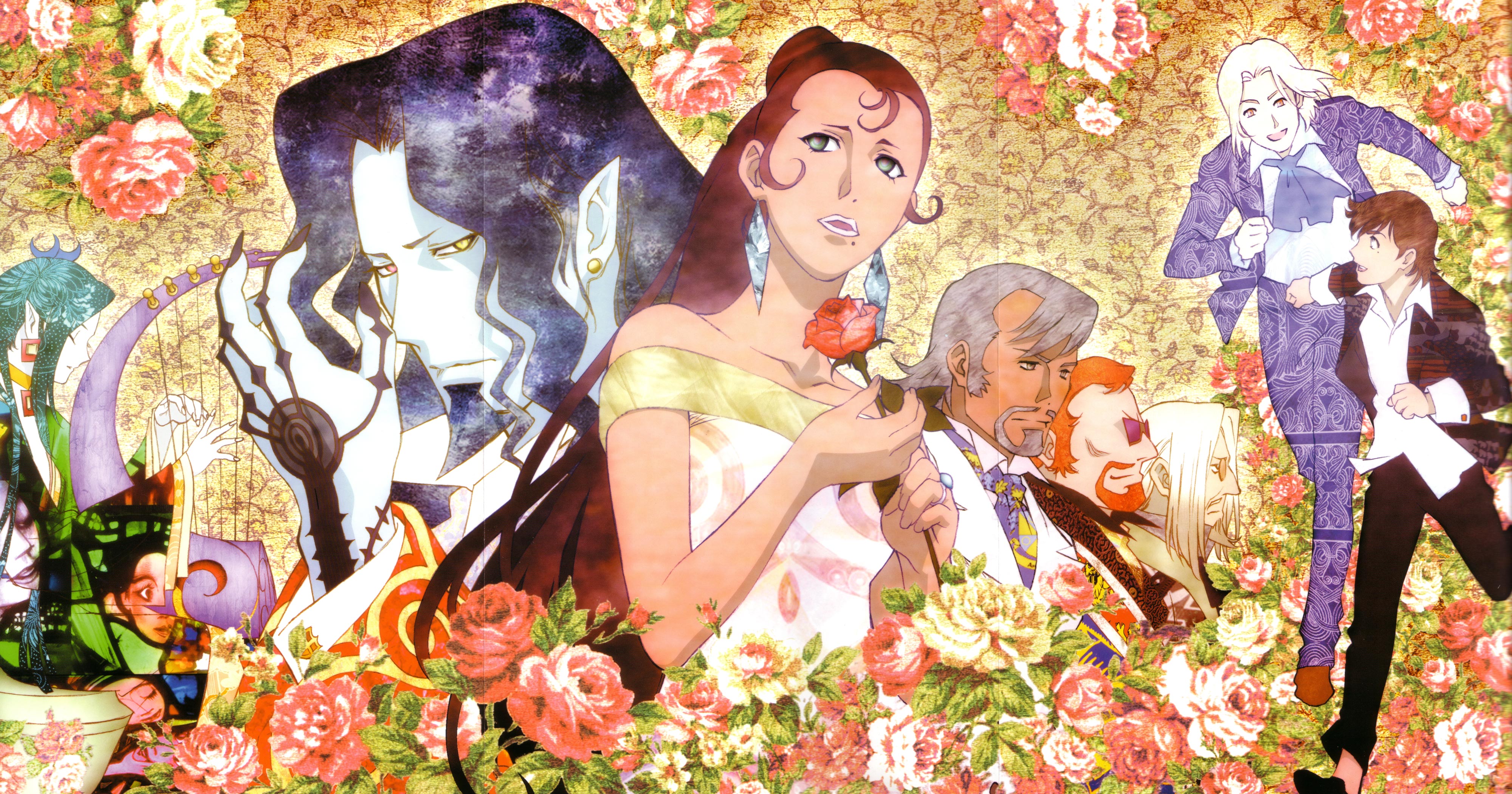
In the end, RxJ attempts to connect to the Japanese audience through its visuals, rather than disconnect itself from its cultural context. This style of character design also reflects in the writing. In the anime, the characters are portrayed less as theatrical archetypes and more as distinct human beings. Every major character has their turn angsting at some stage, in other words.
The portrayal of Romeo and Juliet’s relationship feels less urgent and passionate. It is more focused on their individual persons than on their symbolic whole. The action of the anime takes place over a much longer (though unspecified) time frame than the three days it takes in the play. Shakespeare’s Romeo and Juliet face no obstacles in simply realising their love for each other; their anime counterparts are plagued with self-doubt about their own feelings and desires. It’s clearly designed to make it easier for a young viewer to relate to, as well as to fit the 24 episode count.
Conclusion: For all its homages to Shakespearean aesthetics, Romeo X Juliet feels very “anime” where it counts.
5) Zetsuen no Tempest
This anime got a fair amount of attention from other anime bloggers when it was airing, so my discussion here will be a bit briefer and will inevitably retread some familiar ground.
Like in Romeo X Juliet, the “villain” of Zetsuen no Tempest is a giant life-sucking tree (coincidence?) but I’d argue that ZnT takes a more direct approach to defining what makes a Shakespearean play than RxJ did. ZnT more or less shuns the setting and context of Shakespeare’s plays and holds up his text as the means of identifying with him. This is a story where the characters like to quote Shakespeare’s lines out of context in an attempt to sound meaningful.
It actually works, for the most part. In ZnT, Shakespeare’s words are used to signify and to qualify Aika’s (pictured above) pretensions. In the world of ZnT, as in our own, Shakespeare’s words represent an elusive high art that is more appreciated than it is understood. He is a specter who continues to deliver cryptic meanings from beyond the grave. This is precisely the same role that Aika serves in the plot of Zetsuen no Tempest.
The anime also structures itself dramatically in a way similar to existing Shakespeare plays. It identifies itself as a Hamlet x The Tempest hybrid, but I would argue that it’s more of a pastiche of all of Shakespeare’s plays than a crossover between two distinct plays. It foreshadows a sombre tragedy, reaches a midway climax, and then veers off into ridiculous, self-aware comedy. The overall effect is similar to none of Shakespeare’s plays and to all of them at once. It’s an attempt to replicate style and tone rather than specific plot elements.
It should be noted that this is unusual for a Shakespeare adaptation of any kind. Most modern reinterpretations of Shakespeare attempt to foist the auteur’s style onto a particular Shakespeare work, rather than replicate Shakespeare’s style of writing in a modern setting. The result is that, more than most Shakespearean adaptations, Zetsuen no Tempest observes a strict dichotomy between the Shakespearean style and its own content. Very little attempt is made to blend the two together into a cohesive whole, so the anime-style fanservice and romcom antics really stick out.
But what feels disingenuous about ZnT is more than just the superficial layer of Japanese romantic comedy convention. The very plot structure of ZnT is at odds with the operatic style it attempts to convey.
For one thing, the plot of ZnT is much more complicated than it ever needed to be. Shakespeare plays aren’t known for their complex gambits or for their characters trying to outwit each other with logic. The manga’s serialised form (which the anime was adapted from) encourages but does not necessitate plot complexity, and certainly not to the degree displayed in the anime. The author of ZnT‘s manga previously worked on Spiral, another mystery series focused around mind games, so we have some explanation as to why the story would bring up so many plot points as red herrings, only to never follow through on their meaning.
It’s Masahiro Ando’s directing that carries the theatrical feel of the Zetsuen no Tempest anime all the way, though, not Kyou Shirodaira’s writing. The musical score is loud and preposterous, the animation equally so. Characters pull exaggerated expressions in a way that is only feasible in animation and hold those expressions while the violins screech out.
If Shakespeare and anime clash horribly in ZnT, it doesn’t make the anime any less interesting for it. The result is that something that can’t quite be described as either “Shakespearean” or “anime”, but as something both more and less than that. It’s a one-of-a-kind experience that I feel could only have been crafted from the precise elements it brought to the table.
Conclusion: Zetsuen no Tempest fails to feel like every anime ever, but it also fails to feel like every Shakespeare play ever.
6) Nisekoi
The parallel between Nisekoi and Shakespeare is loose and might not even be noticeable at first glance, but it’s definitely there. Nisekoi is a playful inversion of Romeo and Juliet.
Raku and Chitoge are born from gangster families “both alike in dignity”. Yet unlike the central conceit of Romeo and Juliet, in Nisekoi peace can only be maintained by the two lovers coming together. The cleverness of the premise doesn’t end here, though. Raku and Chitoge despise each other and so they deem their love “fake”. This is in direct opposition to Romeo and Juliet’s, which is held up as the romantic story of true love.
Nisekoi is a romantic comedy, of course, and so a number of things become apparent to the audience straight away. The first is that Raku and Chitoge will fall in love for real, the second is the inherent cheapness of their love in itself. As genre fiction, it will never transcend its form or be regarded as a believable romance. It exists merely to scatch the audience’s romcom itch; its lack of emotional realism is precisely where its appeal lies.
And this is not, in itself, a bad thing. In fact, Nisekoi takes this opportunity to not only play with Shakespeare but also with its own genre. Romance is the most common genre in anime, and so Nisekoi, like many other anime romcoms, is aware of how common it is.
We can see this from the bizarre aesthetics of the anime, which frequently make use of art styles and shots that cannot be seen in live action cinema. Traditional animation techniques strive towards replicating the cinematic feel, but studio Shaft’s animating style runs in direct opposition to that assumption. If the Shaft aesthetic has any literal “meaning”, I would say it tries its best to be abstract for the pure sake of defining anime as a form.
This subtly edges the manga’s generic content into self-parody. By turning Nisekoi into an amalgam of everything that is “anime-ish”, the Shakespearean imagery also becomes completely absorbed into the anime form. The line between Shakespeare’s so-called “high art” and anime’s “low art” is completely fudged away.
It’s no surprise, then, that Shakespeare doesn’t escape being parodied in the Nisekoi manga. In chapter 49, the characters actually act out the Romeo and Juliet play while completely messing up the plot for humorous effect. It’s more than a little cheeky, but the basic “truth” of the love story still manages to get across in Nisekoi’s parody of it. I think it reflects how the manga acknowledges that Romeo and Juliet is still relevant and that its own plot owes a lot to Shakespeare’s genius.
Conclusion: Nisekoi is an affectionate homage to the anime romcom genre and “otaku-fies” Shakespeare as it tries to tell a shallow love story.
Further Reading
If you are interested in learning more about Shakespeare, Shakespeare: The Basics by Sean McEvoy is a great starting point. The Shakespeare Quarterly journal features academic scholarship which I think addresses relevant reinterpretations of Shakespeare in a fairly accessible way. If you are interested in learning more about how Shakespeare is studied in Asia, Shakespeare in Hollywood, Asia, and Cyberspace edited by Alexander C.Y. Huang and Charles S. Ross is a collection of short and easy-to-read essays on the subject.
I’d also recommend Anime and the Art of Adaptation by Dani Cavallaro, but with a grain of salt. It’s one of the only texts which discusses anime adaptations in lieu of post-structuralist theory, which is clearly to its credit, but I feel as if Cavallaro resorts to parroting the ideas of other intellectuals rather than developing an original framework to view anime. It does feature a chapter on Romeo X Juliet, though, which you might find interesting to check out if you enjoyed this blog post.
Random Thoughts
- I feel somehow awesome about writing an essay which mentions hyperbolas, Shakespeare and Nisekoi.
- I’m on the Onodera ship. Chitoge WORST GIRL.
- If anyone cared about my actual opinion on these shows, Zetsuen no Tempest > Nisekoi > Romeo X Juliet. I fell asleep watching RxJ. Good thing I took notes or else there wouldn’t be a post.
- I’m still on uni break. Whenever I’m on break, I miss writing essays terribly. I’m ashamed about what this says about me as a human being.
- I attempted to follow my own advice and wrote as much as I could about art and animation, rather than reading anime as literature.
- 3000+ words! I think this is my longest post yet. I actually thought it would be even longer. Give yourself a pat on the back for reading all the way to the end.
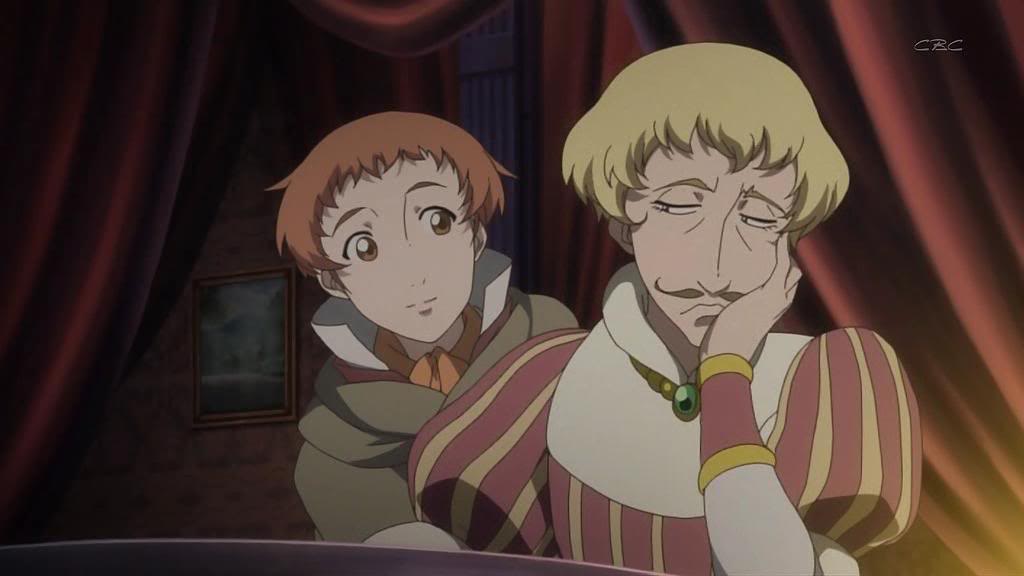
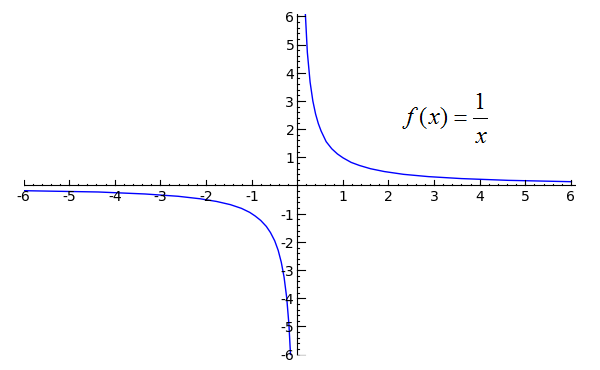

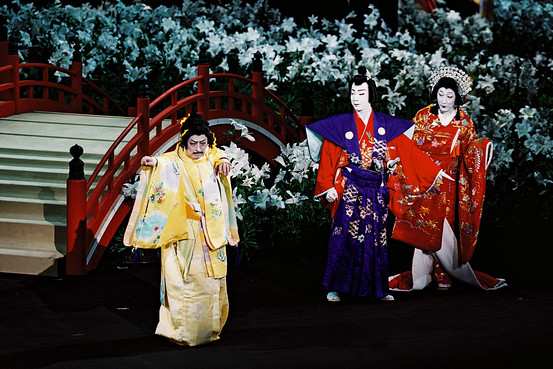
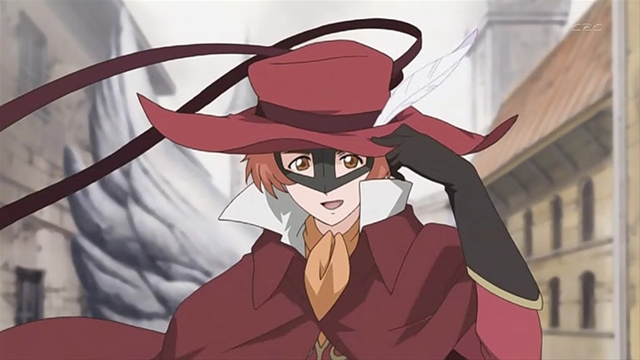
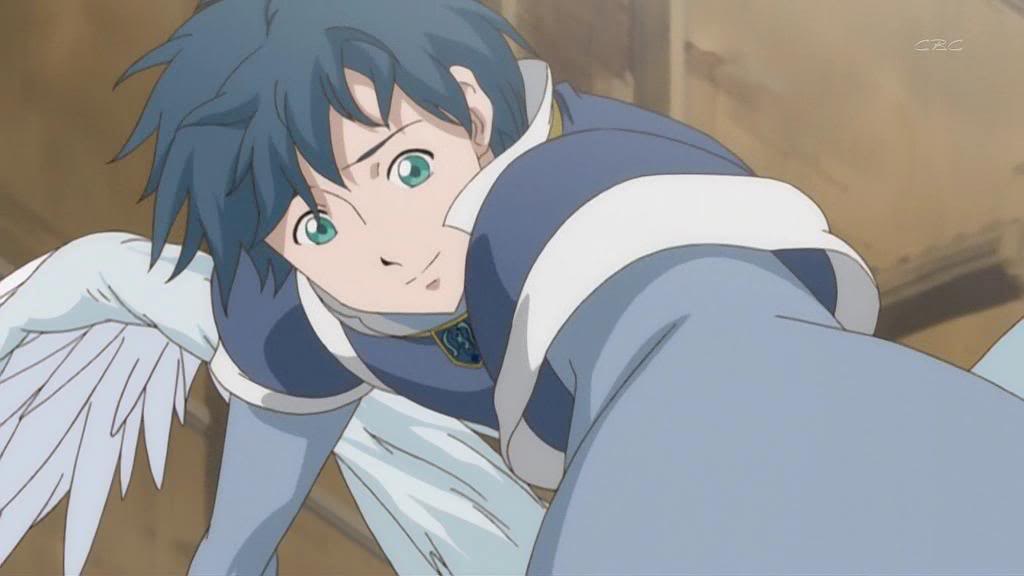
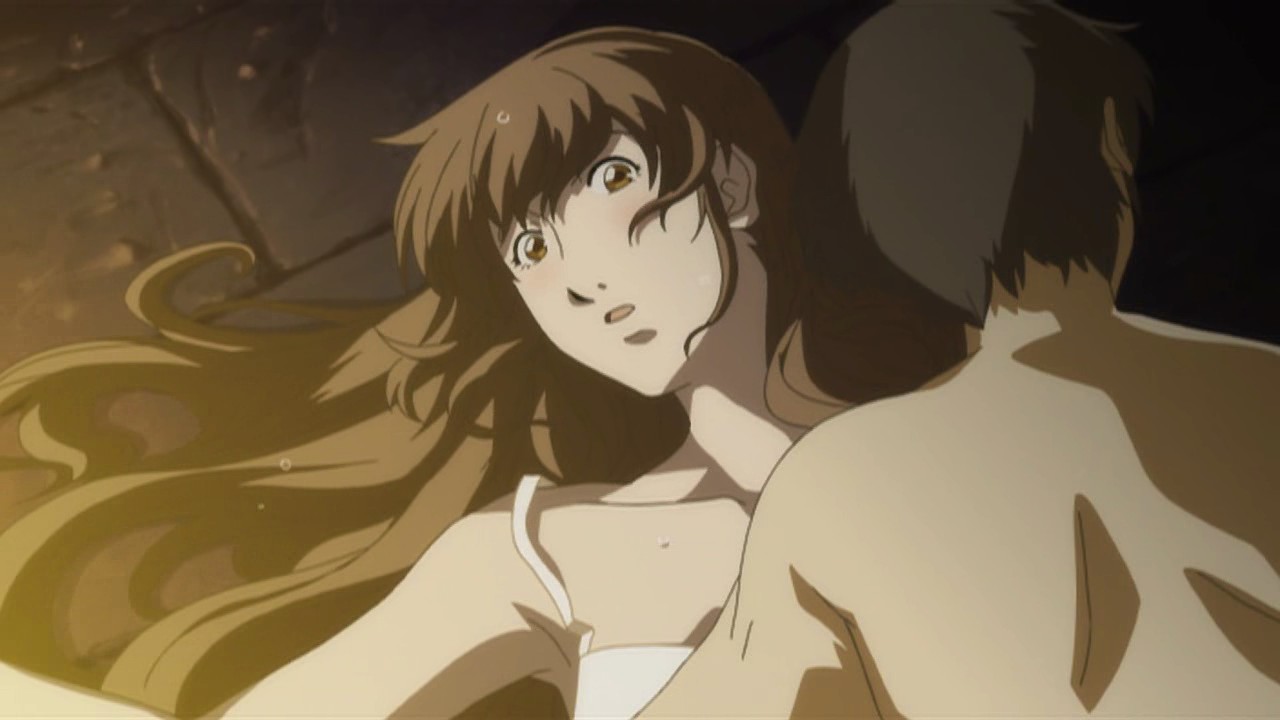
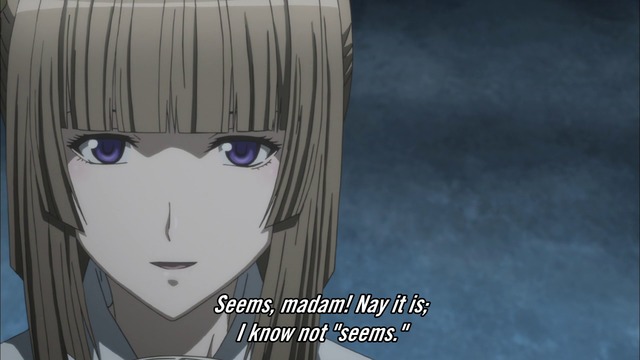

![[HorribleSubs] Zetsuen no Tempest - 09 [720p].mkv_snapshot_08.25_[2012.12.01_23.41.57]](https://frogkun.com/wp-content/uploads/2014/02/horriblesubs-zetsuen-no-tempest-09-720p-mkv_snapshot_08-25_2012-12-01_23-41-57.jpg)
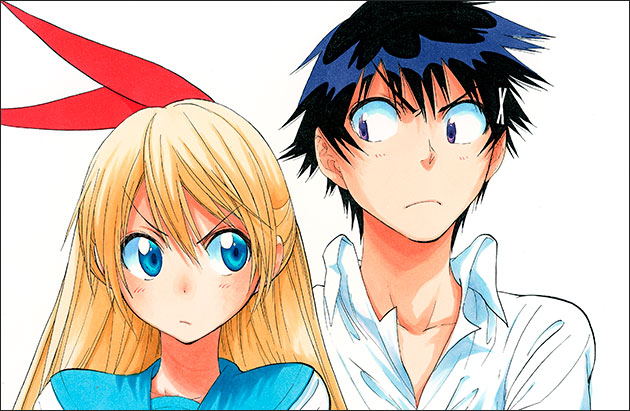
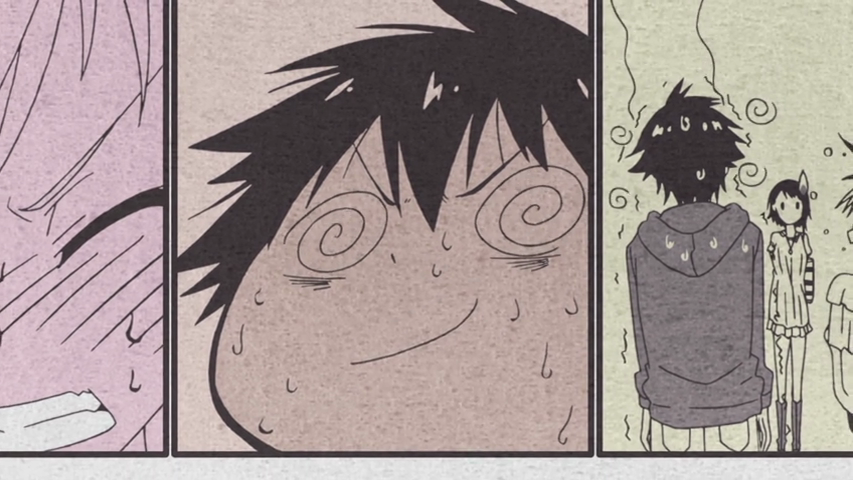
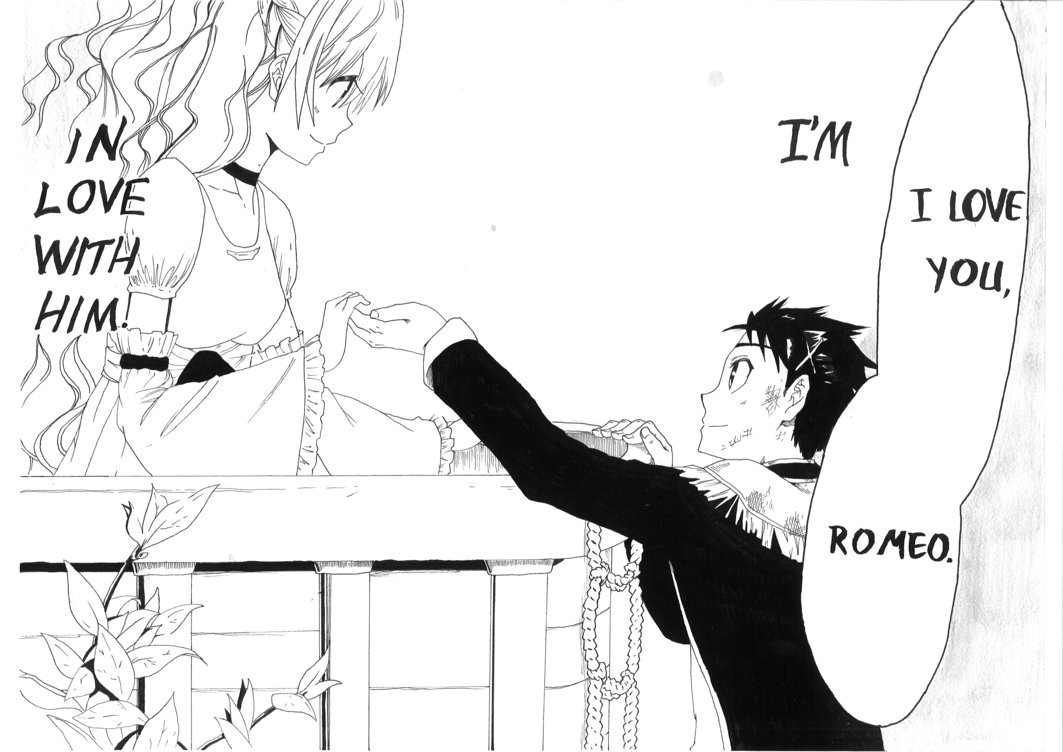
Chitoge and Onodera WORST GIRLS, Ruri best girl.
I was shipping her with glassesbro, though
I definitely agree with you that adaptations need not be faithful, particularly when addressing challenges that one medium cannot express as nearly well as the original. Like you said, it should however preserve the “essence” of the work. It also depends on how strong those new ideas actually fit, which gives rise to an interesting angle to evaluate the work. Nisekoi’s “reinterpretation” for example is so shallow and bare that while it doesn’t attempt to be as evocative as Romeo and Juliet’s romance, it certainly doesn’t excuse its flat characterization and drama.
It is a service to otaku first, an actual story second. In this sense, although barring any relevance to Shakespeare, praise could still be attributed to Nisekoi’s silliness and animation. These are some of the only strengths romcoms have in order to effectively distinguish from any other one of the genre. However, under more particular adaptation concerns, its strict adherence to the manga is ultimately what makes it disappointing. More ambitious animated tricks by Shinbo could improve it, but it’s clear that SHAFT recognizes that the future sales of the anime are contingent on how well the manga fanbase receives it. That’s why its art, although still better than the average romcom, does not achieve its full potential.
>As genre fiction, it will never transcend its form or be regarded as a believable romance. It exists merely to scatch the audience’s romcom itch; its lack of emotional realism is precisely where its appeal lies.
Wooooooow ouch. What a true statement, although I’d be hard-pressed finding many lovers of romcom to admit it. Kudos, kudos.
I take an academic view towards adaptation, which means I’m fully on board with the current trend of not valuing fidelity in the slightest. In my eyes, what matters is how adaptations craft their own vision and whether it stands up well on its own terms. That’s actually why I personally thought Romeo X Juliet was a shoddy adaptation, not because it wasn’t faithful to the spirit of Shakespeare, but because its own story just didn’t make any bleeding sense. It lacked confidence in its own storytelling and tried to cram too many elements into the plot, which I think is typical of Gonzo’s lesser works.
About Nisekoi, I have to agree that it’s simply too shallow to say anything really interesting about Shakespeare – it does the exact same thing as 10 Things I Hate About You. As for Shinbo’s art “improving” the work, I actually have to admit the style really bothered me at first, because the hollowness of the story hit me that much harder. There’s a certain charm to Nisekoi, though, so I’m unwilling to snub my nose at it too much!
Ah, must’ve misinterpreted your viewpoint then. I agree with you on that point too (about works being good/bad irregardless of its devotion to the original). However, should the work being so completely dissimilar, I’d have trouble calling it an adaptation any more! It’s more like a stolen plot element, and the similarities end there. Nothing wrong with that of course, but arguably not an adaptation.
Actually, I’m not at all bothered by Nisekoi’s style. I’m of the opinion that Nisekoi needs more of it! This is why I am personally disappointed, because god knows romcoms need more creativity to spice up the formula. (I still like Nisekoi though!)
Now I’m waiting for how Shakespeare invented the Tsundere with “Taming of the Shrew”.
It’s a widely acknowledged fact in some circles that Shakespeare did it first.
As an English Renaissance poetry fan, I enjoyed this post. I’ve nothing against adaptation, simply because once you’ve read enough, you realize that originality is rare in a work and that the greatest of writers, including our honored William, drew their inspirations from the works of previous greats. And part of what makes a story a “classic” is the endless iterations and reworking of meaning one can extract from it–whether by analysis, retelling, or adapting.
I haven’t seen any of the anime you’ve mentioned (tried RxJ but dropped it after the first ten minutes) but it is interesting to see how Shakespeare’s been interpreted in Japanese animation. Too bad I haven’t found any good Shakespearean adaptations. I might give Zetsuen no Tempest a try, since The Tempest is one of my favorite Shakespearean plays of all time (up there with Macbeth.
I did find your approach in looking at animation style as opposed to the text/dialogue an intriguing position, since Shakespeare’s plays were meant to be performed and seen rather than simply read. Any thoughts on how the performance awareness might play into the visual aspects of anime? :P
Glad I got the approval of someone who actually knows their English literature!
Unfortunately, very few mainstream anime works attempt to adapt Shakespeare, and I have to agree with you that Romeo X Juliet was not a very good attempt anyway. I do recommend Zetsuen no Tempest, with the caveat that beyond the initial premise of “a mage trapped on an island”, it bears very little resemblance to the plot of The Tempest. If you should watch anything I mentioned in this post, it would be Throne of Blood. If you can handle black-and-white films, try it – it’s one of the best Shakespeare adaptations I’ve ever seen. Plus, it’s Macbeth!
As far as I can see, anime takes a similar approach as film does. They both emphasise visuals more than a play does and they both tend to cut out any form of expository monologue in favour of showing the action directly. But personally, I think anime is less concerned than film adaptations are about bringing Shakespeare alive to someone who is familiar with reading the plays. That’s why I found very little direct reference to Shakespeare’s text in anime dialogue. Even Zetsuen no Tempest used its quotes sparingly. If I emphasised the visual over textual analysis, it’s because that’s how anime usually presents itself, whether handling Shakespeare or otherwise. I think anime is not really that interested in how Shakespeare is performed but rather in being appealing as anime.
Hope that answers your question?
Death Note is a pretty close analogue to Romeo and Juliet. Especially the movies.
I saw what you did there
Actually I think Richard III’s influence on how to do a Villain Protagonist is clearly felt in Light Yagami.
*pat on the back*
I read some Shakespeare’s works, but I still feeling that I missed something because I can’t read them in the original english… I have to read them translated and well, that’s it.
RxJ anime, I couldn’t stand it. Never finished.
[…] draw from a wider pool of stories than popular YA-targeted franchises. Hell, my earlier post on Shakespeare adaptations should attest to […]
I quite enthusiastically support this idea, being a fan of both anime and Shakespeare. I was listening to soundtrack as I was walking home today, and one track was particularly tragic and grand, fitting of a Shakespearean protagonist who did everything he thought was right but as a result he lost everything in the end. My mind immediately flashed to Macbeth, in Fate Zero style (probably because that’s the latest anime I’ve watched and loved). In my mind, the scene is set right after the death of Lady Macbeth and Macbeth himself is sitting there, half dazed, looking for all the world like he’d had his life snuffed out of him, muttering the “out, out, brief candle!” soliloquy. His hair would be flowing in slow motion in a fashion only possible in anime; he would be looking blankly at the black sky as he readies himself for his final battle, his lost expression suggesting that he is already one foot out of this life.
The emotional and philosophical seriousness of Shakespeare is something I’ve only seen done right by either Thespians (certainly not Hollywood) or good anime. As you may have imagined, I see a BOATLOAD of Shakespearean themes in Fate/Zero; the madness of love being one out of many. I thought Macbeth is EXACTLY the kind of material Gen Urobuchi would have a great time adapting. Anime is full of dramatic potential precisely because it’s not live action, and when done well, I can see it done more evocatively than live action. And the literature nerd in me just want to see Shakespeare popularized and accessible to the general population, sort of like how the Fate franchise introduced many to Irish fairytales.
I love when a Moe or Yuri anime goes an all Girls performance of Romeo and Juliette.
But I feel the most Shakespearean Anime is really Fate/Zero. Lancer’s death clearly echo’s Mercutio’s. And in the Grail Dialogue, I feel Arthur is like Henry V and Gilgamesh like Saturninus.
Thanks!